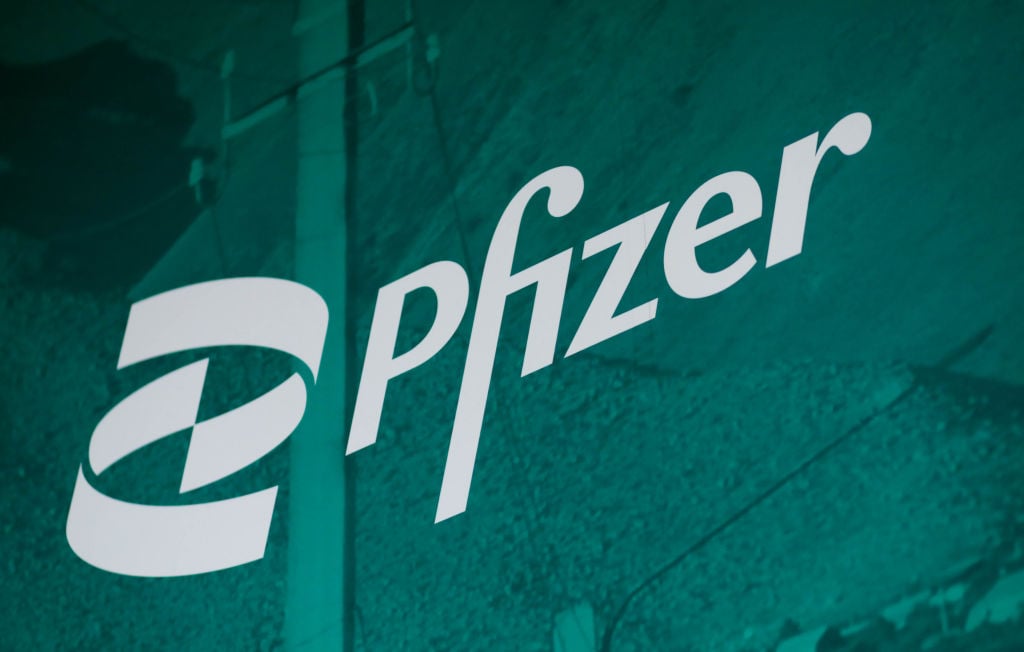Pfizer (PFE 0.69%) was scheduled to report its second-quarter earnings results on Tuesday, July 30. But that was before the big drugmaker announced that it's merging its Upjohn unit with Mylan. As a result of this big news, Pfizer released its Q2 results before the market opened on Monday, a day earlier than expected.
It's probably appropriate that Pfizer mixed things up with its earnings announcement schedule. Its Q2 earnings results were mixed, too. Here's what you need to know from Pfizer's latest quarterly update.

Image source: Getty Images.
By the numbers
Pfizer reported Q2 revenue of $13.3 billion, down 2% year over year. The company's revenue also came in lower than the consensus Wall Street estimate of $13.4 billion.
There was better news from Pfizer about its bottom line, though. The drugmaker announced net income on a generally accepted accounting principles (GAAP) basis of $5.05 billion, or $0.89 per share. This GAAP earnings per share reflected a 37% jump over the prior-year period.
The company posted non-GAAP adjusted earnings in the second quarter of $4.52 billion, down 2% year over year. However, Pfizer's adjusted earnings per share in Q2 came in at $0.80, a 4% increase over the prior-year period. It also topped the average analysts' estimate of $0.75.
Behind the numbers
I had expected currency headwinds for Pfizer in Q2. Sure enough, foreign exchange fluctuations turned out to be problematic for the company. On a constant-currency basis, Pfizer's total revenue would have increased by 2% year over year instead of dropping 2%.
It's no surprise that Pfizer's biopharma segment was its best-performing business in the second quarter, with year-over-year revenue climbing 2% to $9.6 billion. Ibrance and Eliquis generated operational sales growth of 27% and 26%, respectively. Xeljanz was the biggest winner among Pfizer's top drugs, with sales soaring 36% year over year on an operational basis.
However, sales slipped 10% year over year for Pfizer's top-selling product, pneumococcal vaccine Prevnar 13. The company said that this decline was primarily due to lower government purchases in the second quarter and slipping sales in the adult market.
Revenue for the Upjohn segment fell 11% from the prior-year period to $2.8 billion. This unit experienced a 20% operational sales decline in China mainly as a result of the March 2019 implementation of a volume-based purchasing program in some Chinese cities. Sales for Viagra continued to fall due to increased generic competition. Also, Pfizer reported that sales for Lyrica dropped with wholesalers destocking ahead of generic versions of the drug hitting the market.
Pfizer's consumer healthcare segment posted Q2 revenue of $862 million, down 3% year over year. Sales increased 1% operationally, though, with 4% operational growth in international markets offset partially by a 2% drop in U.S. revenue.
Looking ahead
Pfizer now expects full-year 2019 revenue between $50.5 billion and $52.5 billion. That's lower than its guidance, provided in April, of full-year revenue between $52 billion and $54 billion. This downward revision is due to the anticipated formation of the consumer healthcare joint venture with GlaxoSmithKline in August and the expected close of Pfizer's acquisition of Array BioPharma.
The drugmaker also now looks for adjusted earnings per share for full-year 2019 between $2.76 and $2.86. Pfizer previously projected full-year adjusted EPS of $2.83 to $2.93.
Of course, the really big development to look forward to is Pfizer's planned merger of its Upjohn unit with Mylan. Pfizer CEO Albert Bourla stated that he expects completing this transaction will put Pfizer in a position "to deliver revenue and adjusted diluted EPS growth through the mid-2020s that is among the industry leaders." He also added that Pfizer would continue to "allocate significant capital directly to shareholders, primarily through dividends."







